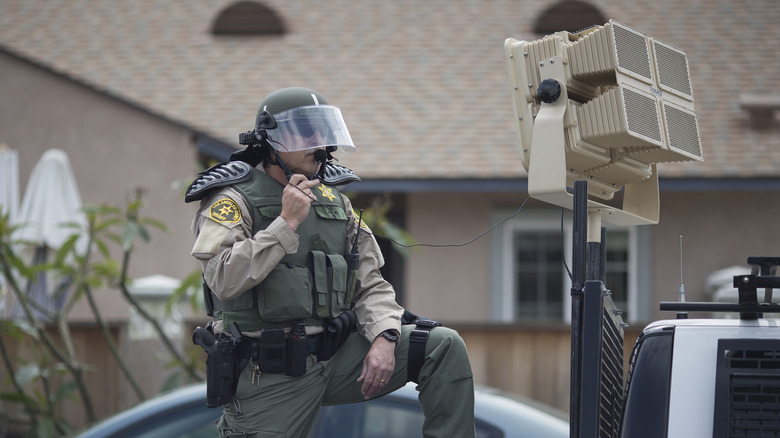Sonic Weapons Explained: How Do They Work, And What Are They Used For?
As anyone who's been on the receiving end of noisy neighbors will know, unwanted sound can be quite the nuisance. It's about so much more than a lack of such courtesy, though: Noise pollution from airports, factories, and other such facilities are often under construction, causing concern and annoyance when venturing too close to residential areas.
As sonic technology has advanced, humanity has even found several different ways to utilize the power of noise and irritation as a weapon. Though not typically wielding the physical power of traditional penetrative weaponry, sound can be wielded to devastating effect against a variety of targets.
From harming morale of targets and bolstering that of allies, to causing physical pain and warding enemies away, sonic weapons have a lot of utility in non-lethal suppression. Sonic weapons are a relatively new technology that's seen a variety of uses, and the evolving technology behind this aspect of a military arsenal is extremely unique compared to other modern weaponry.
How do sonic weapons work?
As former U.S. army sergeant Herb Friedman put it, noise has always been used in warfare "to threaten the enemy and raise the morale of your own people." Though this surely had an impact, things changed when technology allowed for the use of literal sonic-based weaponry.
One of the first such modern weapons was deployed by the United States military with the "Long-Range Acoustic Device" — or LRAD. This weapon saw use during the war in Iraq in the mid-2000s, and could reportedly blast waves of sound at volumes approaching 150 decibels. According to the CDC, this is about as intense as the sound of a firecracker, capable of damaging ears and causing pain.
An LRAD looks like a simple speaker, and can be used in loudhailer/megaphone fashion. However, it can also be set to administer a powerful, focused blast of sound in a specific area. With sound, it's the intensity — rather than volume — that is key, and that's where this terrible weapon excels. Audio producer Cory Choy described to Popular Mechanics in an interview that being exposed to an LRAD was like "the sound equivalent of looking into the sun ... horrible, nauseating pain."
The human ear is very sensitive to sounds between 2000 Hertz and 4000 Hertz. As a result, the LRAD operates in this particular region. The dispersal of sound means that it is most effective in a narrow area, but the concentrated wrath of such an LRAD weapon is fearsome.
How are sonic weapons used?
It's important to note that LRAD devices aren't strictly weapons — at least, not exclusively. The first ones were created after the October 2000 attack on the USS Cole: the U.S. Navy needed was a means of communicating with other ships at long distances, for an immediate response, and without the distortion that occurs when sound carries further through other devices. "Targeted" communication is certainly a strength of the LRAD, but it is also devastatingly effective at inflicting quick, non-lethal injury and forcing gatherings of people to leave an area.
Should demands aimed at ships, protestors, and other targets fail, the LRAD's other function doesn't tend to fail. These so-called sound cannons deter pirate attacks and bring swift, vicious ends to gatherings and protests of various forms.
The difficulty with sonic weapons is that, though they're heavily targeted by nature, it can be very challenging for the user to maintain this target. As Daphne Carr put it in Muff the Police!, "Although LRAD is directional and has volume nobs, the invisibility of its reach makes it difficult for police to understand its impact on those in its reach."
A formidable and powerful technology, absolutely, but one that must be used with care, as the health effects can be devastating to those in the affected range. According to Carr's report, though the suppression from LRAD devices is non-lethal, prolonged exposure can lead to temporary and permanent hearing loss — among other symptoms such as disorientation and migraines.


